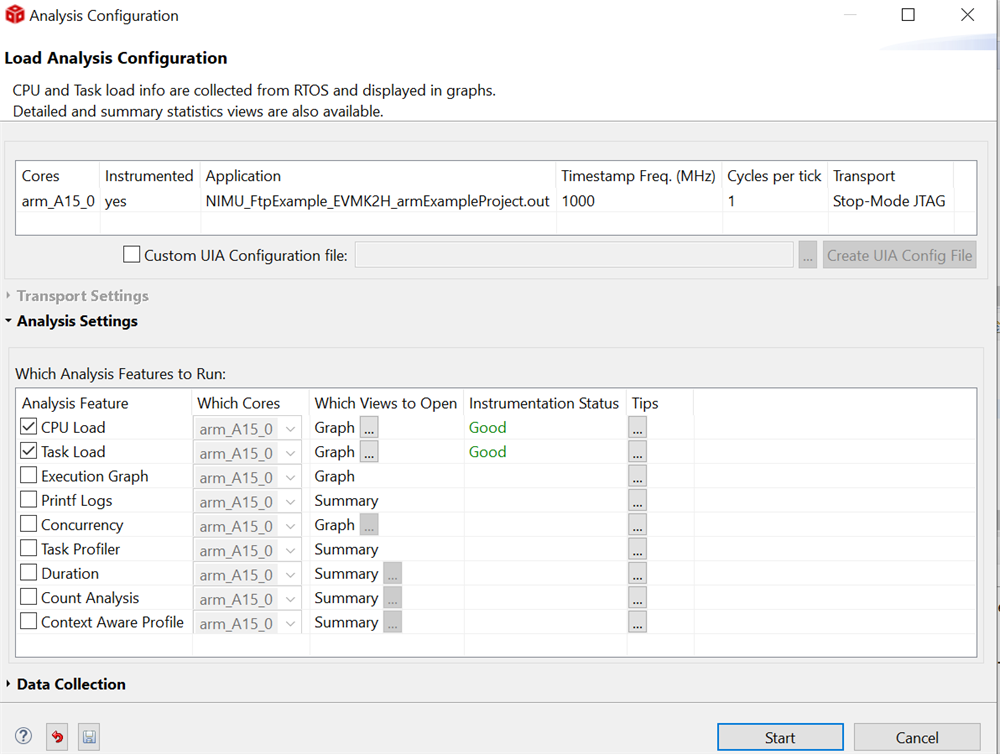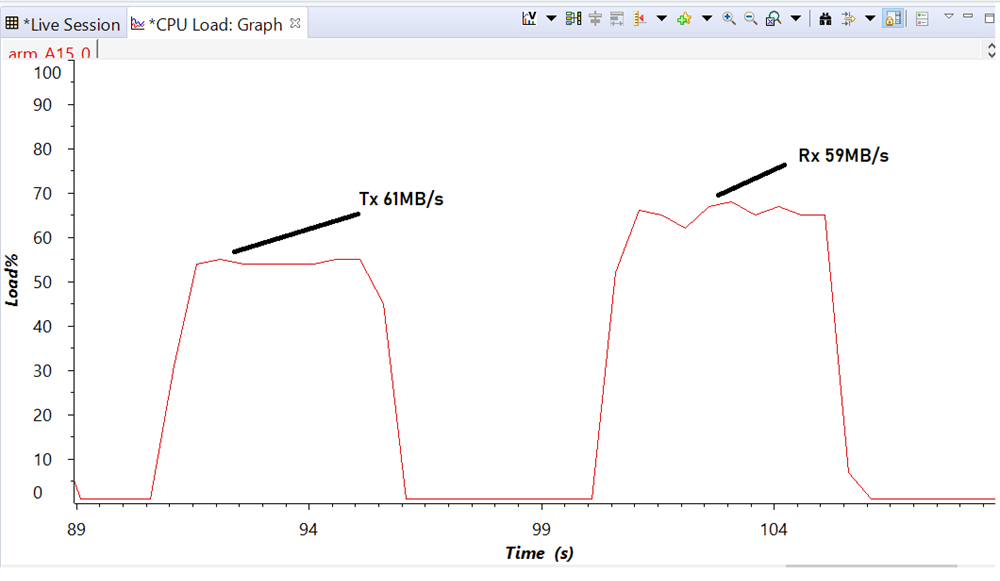SPRACT8 September 2020 66AK2H06 , 66AK2H12 , 66AK2H14
- Abstract
- Trademarks
- 1Introduction
- 2Hardware and Software
- 3Develop the FTP Server on K2H
- 4Performance Tuning
- 5Summary
- 6References
4.3 UIA CPU Load Instrumentation
Before moving deeper into network setting and NIMU driver tuning, it is good to understand if the throughput is limited by the CPU load, which is probably 100% busy? Such can be answered by using Unified Instrumentation Architecture (UIA) module for CPU load measurement. The major steps include:
 Figure 4-3 Adding UIA Module Into CCS
Project
Figure 4-3 Adding UIA Module Into CCS
Project- Add the below configuration into the
.cfg file. The SYSBIOS has a default CPU speed info which needs to be updated with
the real CPU speed as
well:
BIOS.cpuFreq.lo = 1000000000; /*1GHz CPU*/ var LoggingSetup = xdc.useModule('ti.uia.sysbios.LoggingSetup'); LoggingSetup.loadLogging = true; LoggingSetup.loadLoggerSize = 32768; LoggingSetup.mainLoggerSize = 32768; LoggingSetup.sysbiosLoggerSize = 32768; LoggingSetup.sysbiosSemaphoreLogging = true; LoggingSetup.loadTaskLogging = true; LoggingSetup.loadSwiLogging = true; LoggingSetup.loadHwiLogging = true; LoggingSetup.enableTaskProfiler = true; LoggingSetup.eventUploadMode = LoggingSetup.UploadMode_JTAGSTOPMODE; - Enable the UIA measurement in CCS by
selecting Tools → RTOS Analyzer → Load Analysis:
 Figure 4-4 UIA Analysis
Configuration
Figure 4-4 UIA Analysis
Configuration - Run the test.
- Halt CPU to collect the CPU load graph. Below is an example with Tx throughput
61MB/s followed by Rx throughput 59MB/s. The CPU load is 55% and 68%, respectively,
so there is still CPU processing power left.
 Figure 4-5 A15 CPU Load Under FTP
Transmitting and Receiving
Figure 4-5 A15 CPU Load Under FTP
Transmitting and Receiving - Note that the UIA module adds a little bit overhead as every context switch is being timestamped to get more accurate CPU load number. Remove the UIA code in the .cfg file once the measurement is performed.